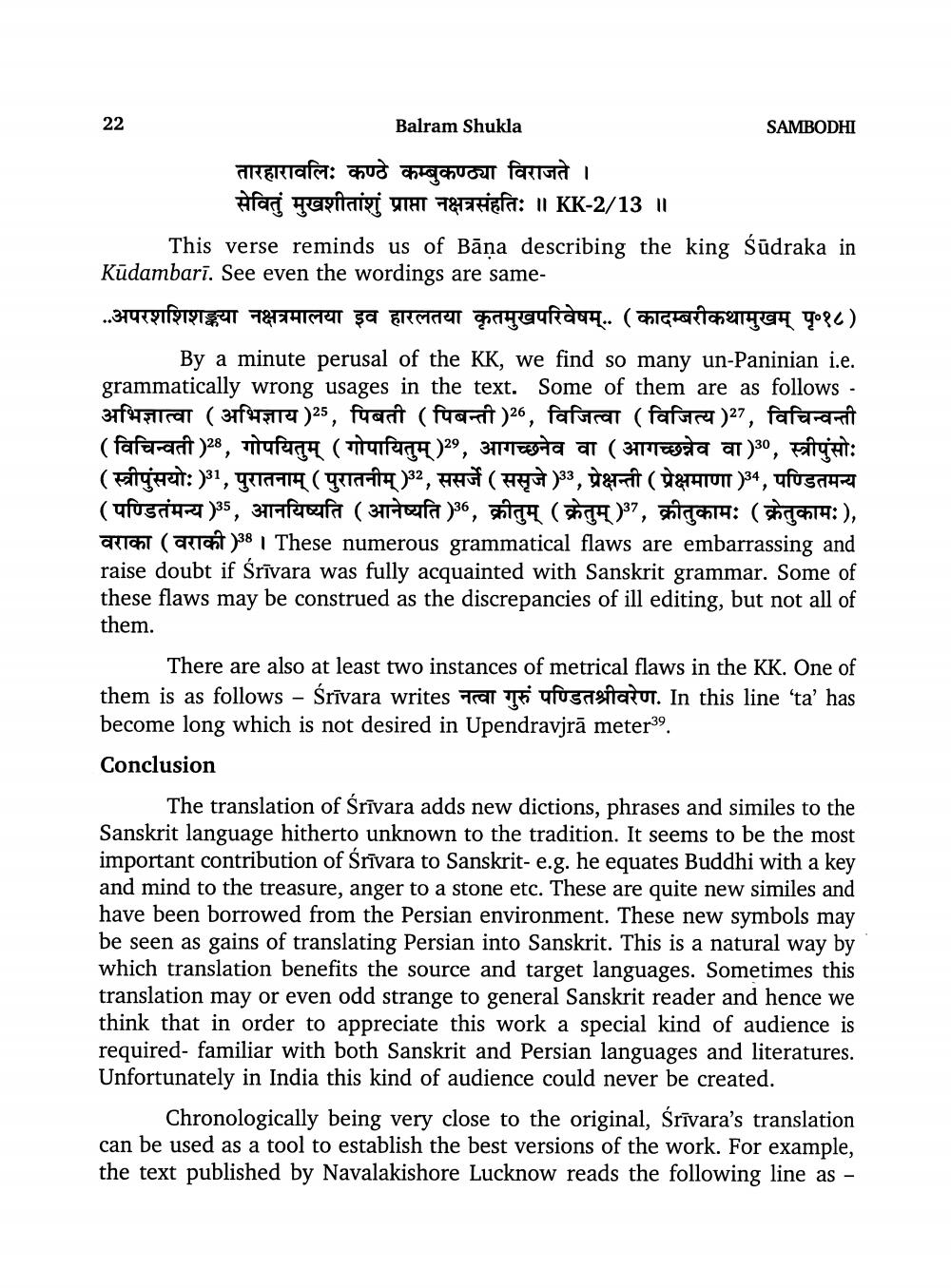________________
Balram Shukla
SAMBODHI
तारहारावलिः कण्ठे कम्बुकण्ठ्या विराजते ।
Afani tagitaisi THT THERET: 11 KK-2/13 11 This verse reminds us of Bāņa describing the king Śūdraka in Kūdambari. See even the wordings are same..अपरशशिशङ्कया नक्षत्रमालया इव हारलतया कृतमुखपरिवेषम्.. (कादम्बरीकथामुखम् पृ०१८)
By a minute perusal of the KK, we find so many un-Paninian i.e. grammatically wrong usages in the text. Some of them are as follows - 37f4flrat ( 31 HITRI )25, fuani (fuanit)26, faftrat (farsirat )27, fafaramit (faferrat)28, ufak (ufca )29, 311iegta ar ( 311 Taglia ar )30, Fiyat: (Fighet: )31, gedaan (Train )32, FHU ( HYTT )33, deri (8741VTT )34, ufuSH4R (uiuSri R )35, 3Fiola (34oft )36, con ( la 37, shch14: (chachta:), वराका (वराकी)38 | These numerous grammatical flaws are embarrassing and raise doubt if Śrīvara was fully acquainted with Sanskrit grammar. Some of these flaws may be construed as the discrepancies of ill editing, but not all of them.
There are also at least two instances of metrical flaws in the KK. One of them is as follows - Śrīvara writes That To ufusa TRUT. In this line 'ta' has become long which is not desired in Upendravjrā meter39. Conclusion
The translation of Śrīvara adds new dictions, phrases and similes to the Sanskrit language hitherto unknown to the tradition. It seems to be the most important contribution of Śrīvara to Sanskrit-e.g. he equates Buddhi with a key and mind to the treasure, anger to a stone etc. These are quite new similes and have been borrowed from the Persian environment. These new symbols may be seen as gains of translating Persian into Sanskrit. This is a natural way by which translation benefits the source and target languages. Sometimes this translation may or even odd strange to general Sanskrit reader and hence we think that in order to appreciate this work a special kind of audience is required- familiar with both Sanskrit and Persian languages and literatures. Unfortunately in India this kind of audience could never be created.
Chronologically being very close to the original, Śrīvara's translation can be used as a tool to establish the best versions of the work. For example, the text published by Navalakishore Lucknow reads the following line as -




